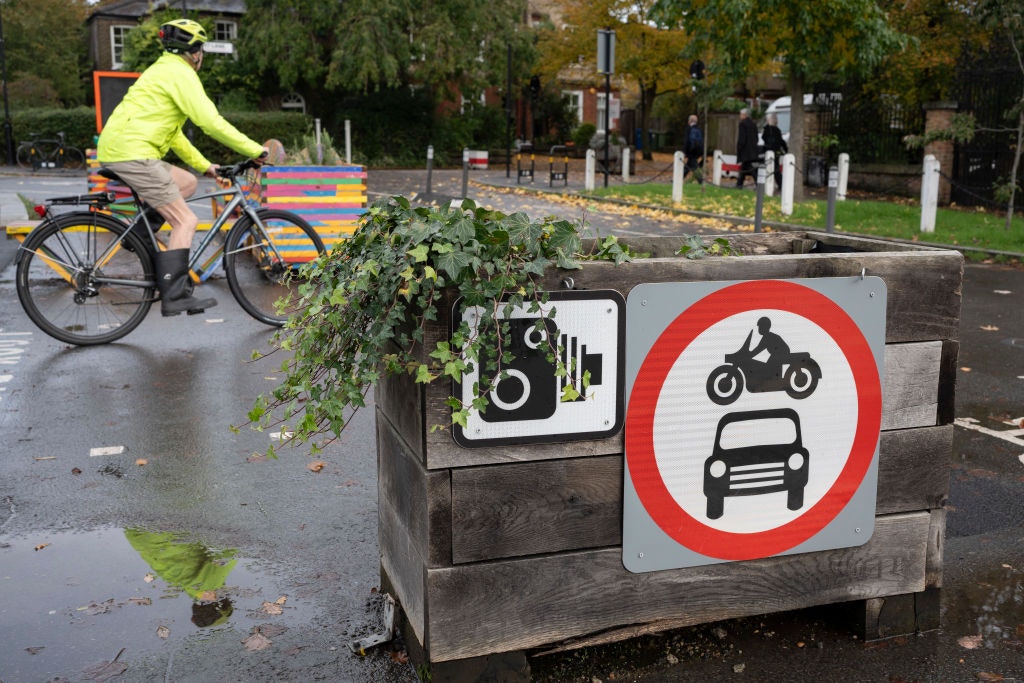Dazzled to death in Venice
At last, a truly world-class experience
This article is taken from the June 2024 issue of The Critic. To get the full magazine why not subscribe? Right now we’re offering five issues for just £10.
Like nearly everything else in Venice, Charles Baudelaire’s apartment is available for rent on Airbnb. A lady named Valeria lets it for around £400 per night and though apparently it’s rather poky, it is very handy for the Peggy Guggenheim museum — whose permanent collection features Jackson Pollock’s The Moon Woman, inspired by Baudelaire’s poem, which describes “the fearful goddess, the fateful godmother, the poisonous nurse of all the moonstruck of the world”.
Pollock was never quite as polite as he might have been to poor old Peggy. His picture popped into my head as I was trying to decide between tasting menus at the Nolinski Hotel’s newly-opened restaurant the Palais Royal. Six or nine courses?
In the end I opted for restraint, meaning I didn’t get to try the palate-cleanser on the “Athens to Venice” menu, a combination of lemon, grapefruit and marigold, whose explosive colours had reminded me of the ingrate artist.
Unlike nearly every other restaurant in Venice, the Palais Royal is the real thing. I’ve been a huge fan of the chef, Philip Chronopoulos, since he took over at one of my all-time favourite places, Paris’ Palais Royal, in 2015. Chronopoulos’ two-star pedigree is rigorous old-school, Paul Bocuse-via-Joël Robuchon, but his personal take on haute cuisine is galvanised by references to his Greek heritage, incorporating the humble ingredients of yiayia’s home cooking — chickpeas, feta cheese — to sincere and surprising effect. So I knew the food was going to be gorgeous; what I hadn’t expected was such a theatrically stunning room.
The Nolinski opened in 2023 on the former site of the Venetian stock exchange. There’s a relaxed garden bistro on the ground floor, but to reach the restaurant one ascends along twisting corridors and marble staircases before emerging through velvet curtains into the top-floor amphitheatre. Secret, sexy, glamorous.
The space is as harmoniously eclectic as the city itself: Byzantine loggias concealing plushy banquettes, antique statues mixed with contemporary art, Murano glassware custom made by Berengo, a fabulous gold-balustraded mezzanine, the kind of room that makes you feel famous.
Chronopoulos’ cooking proves equally dazzling. The prices are very steep (€265 for the six-courser, €295 for the nine), but still less than a box at the Fenice and with a considerably better set.

We began with an inspired reinterpretation of a classic Greek mezze plate, including tarama, feta, egg and herbs, the latter a startling chlorophyll-rich take on horta, the wild greens gathered everywhere in Greece. Broccoli with citron and lemon balm then came accompanied by a caviar tartlet as rich and unctuous as the velvet draperies, followed by lobster with peas and lemongrass.
Whilst executed with thoroughly French aplomb, this felt a very Venetian dish, like tasting the salt breeze in the orchards of Sant’Erasmo on a spring evening. Veal with rhubarb, onion and mustard was a fascinatingly successful combination, the sharp fruit elevating the delicate meat to a long finish boosted by the allium undertone.
Two pudding courses (hurrah!), a baba of coffee with a quivering Doge’s cap of fragrant mascarpone and yoghurt with Peloponnese honey and cinnamon formed a polished finale, but curiously, this is not food for greedy people.
Chronopoulos is concerned with flavour, not satiety; he cooks for the imagination as much as the palate, in an alchemical investigation of the possibilities of what Baudelaire called “nature’s pharmacy”. Having said this, I do want to go back for the full monty, which features John Dory with saffron and kefir, lamb with artichoke and oregano and the aforementioned marigold twist on modernism.
In Palais Royal, Venice has been finally gifted a truly world-class restaurant, and it would be refreshing if the competition woke up to the fact that slopping out woolly fish and sickly Bellinis has been underwhelming their frustrated customers for years (I’m looking at you, Harry’s Bar).
Palais Royal’s wines are a similar reminder of the overpriced mediocrity of many Venetian offerings. Instead of the standard greasy Ribolla Gialla, I tried a glass of Pouilly-Fuissé, all heartbreaking freshly-mown grass, and a stupendous claret which put the tinny pinot noirs one usually encounters this side of the Alps to shame.
It’s not that Italian wine is bad; it’s just that French is so very much better. Again, the list here is not for the faint-hearted, but given their quality, the suggestions by the glass are more than reasonable.

Seeking a phrase to encapsulate the restaurant’s atmosphere, Baudelaire turned up again. The author of the decadents’ handbook Les Fleurs du Mal is not renowned as a food writer, but in his third preface to the volume, Baudelaire drew the analogy between poetry, painting and cuisine since each is capable of expressing the full range of human feeling, from beatitude to bitterness.
Wine, he claims, can be eaten as much as drunk; a truffle is as thrilling for its provenance in time and space as its taste. The art is not entirely the object, but its synaesthetic qualities. Hence Matisse choosing the title for his radical 1904 canvas Luxe, Calme et Volupté from Baudelaire:
“Here, there is nothing but order
and beauty,
Luxury, peace and pleasure.”
Enjoying The Critic online? It's even better in print
Try five issues of Britain’s most civilised magazine for £10
Subscribe














